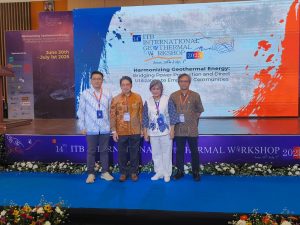Jakarta – Despite showing progress since 2018, the development of solar power plants (PLTS) in Indonesia is relatively slow. Therefore, the government is urged to carry out regulatory reforms so that it can cover the gap in the renewable energy mix in 2025 of 3-4 GW.
“Rooftop solar power plants with technical potential of up to 655 GWp for housing only, can be built quickly, involve investment from the community, without burdening the government,” said Fabby Tumiwa, Executive Director of IESR, at the Shine Bright: Advancing G20 Solar Leadership event held by IESR together Bloomberg Philanthropies, in collaboration with the International Solar Alliance, and the Indonesian Solar Energy Association, Thursday (27/10).
Tumiwa said the government and PLN should not block the permit for the installation of rooftop solar power plants, and instead should support and facilitate the use of rooftop solar panels by the industry, businesses and households. “We also expect additional renewable energy generation capacity from the implementation of PLN’s RUPTL 2021-2030,” he said, adding that availability of funding in the form of soft loans from financial institutions could support the adoption of household-scale PV mini-grid.
The government needs local industry support
Meanwhile, Minister of Energy and Mineral Resources (ESDM), Arifin Tasrif in his speech, explained that solar energy in the energy transition roadmap plays an important role in electricity in Indonesia, which is 421 GW of the total new and renewable energy (EBT) of 700 GW. However, he said, the government still needs support from local producers and industries to meet the Domestic Component Level (TKDN) considering that Indonesia has the potential for minerals and important materials for solar power plants, batteries, and power cables.
“In addition, the aspect of easy access to affordable financing, incentives, and other financing facilities is very important to provide financing for feasibility studies and increased investment in renewable energy such as solar energy,” he explained.
The Indonesia Solar Energy Outlook (ISEO) 2023 assesses that the determination of the highest price benchmark in Presidential Regulation No. 112/2022 is expected to provide more space for developers to submit their bids.
Although the Ministry of Energy and Mineral Resources has issued the Minister of Energy and Mineral Resources No. 26/2021, several provisions in it were not carried out, thus causing the slow growth of PV mini-grid. The excess of PLN’s electricity supply is suspected to be the cause of the limitation on the utilization of rooftop solar power plants by 10 to 15 percent of capacity in early 2022. The Indonesia Solar Energy Outlook (ISEO) 2023 report was first launched this year. Initially, the progress of solar energy development within the framework of the energy transition was integrated in the Indonesia Energy Transition Outlook (IETO) report. (Hartatik)
Banner photo: Muh Saefullah, administrator of the Hybrid Power Plant assisted by the Pertamina International Cilacap Refinery, cleans solar panels for electricity in Bondan Hamlet, Friday (28/10). (Hartatik)













